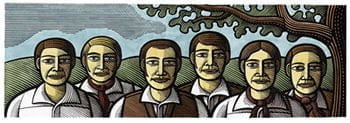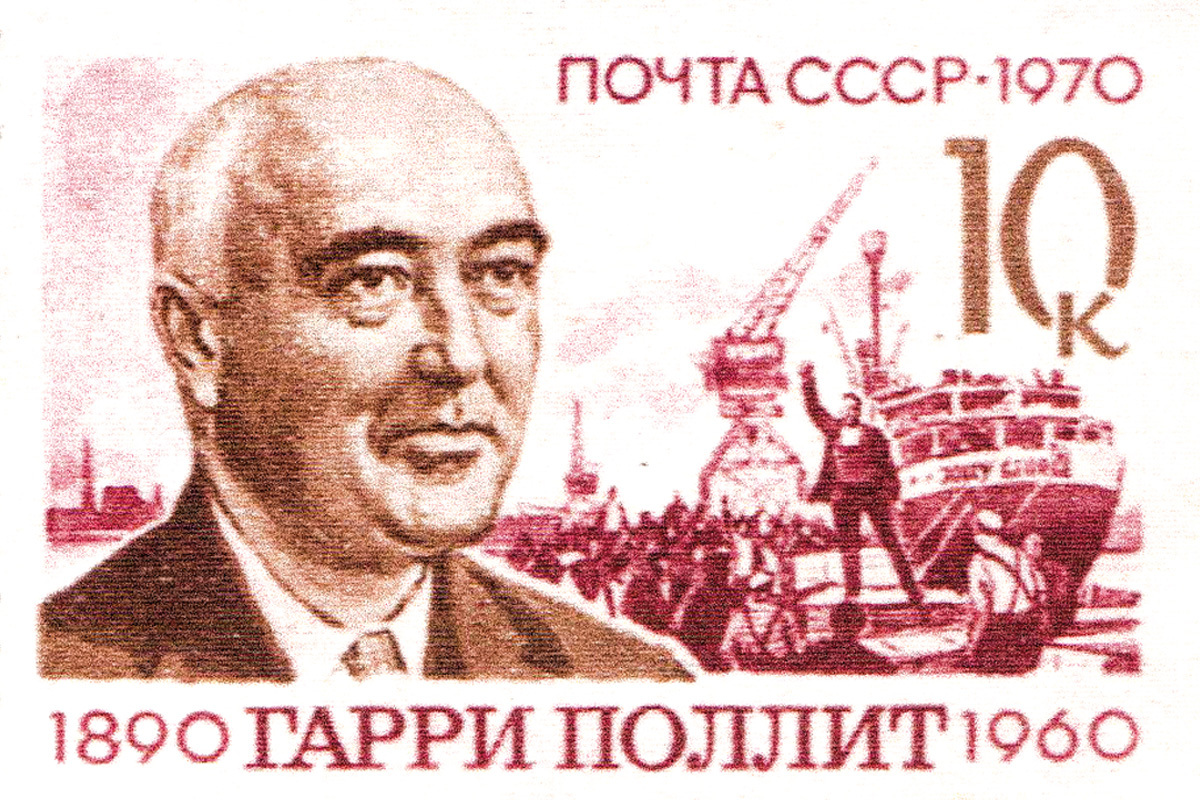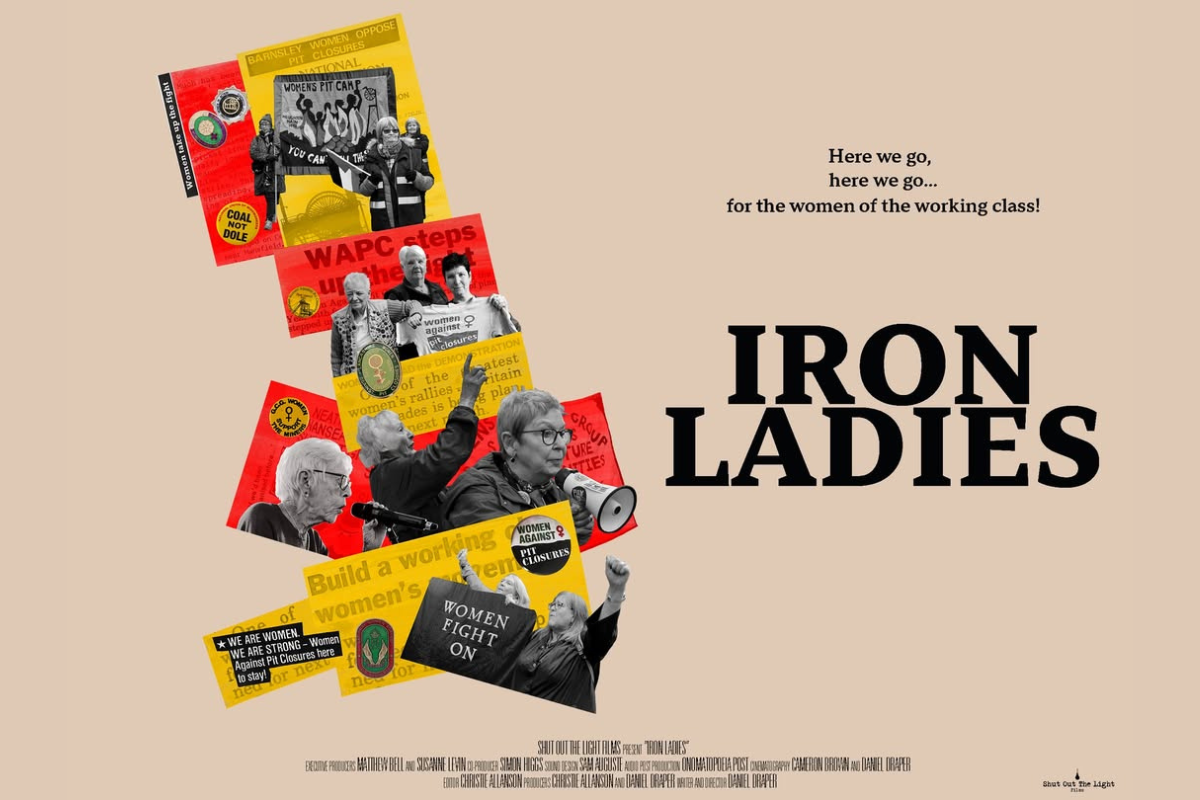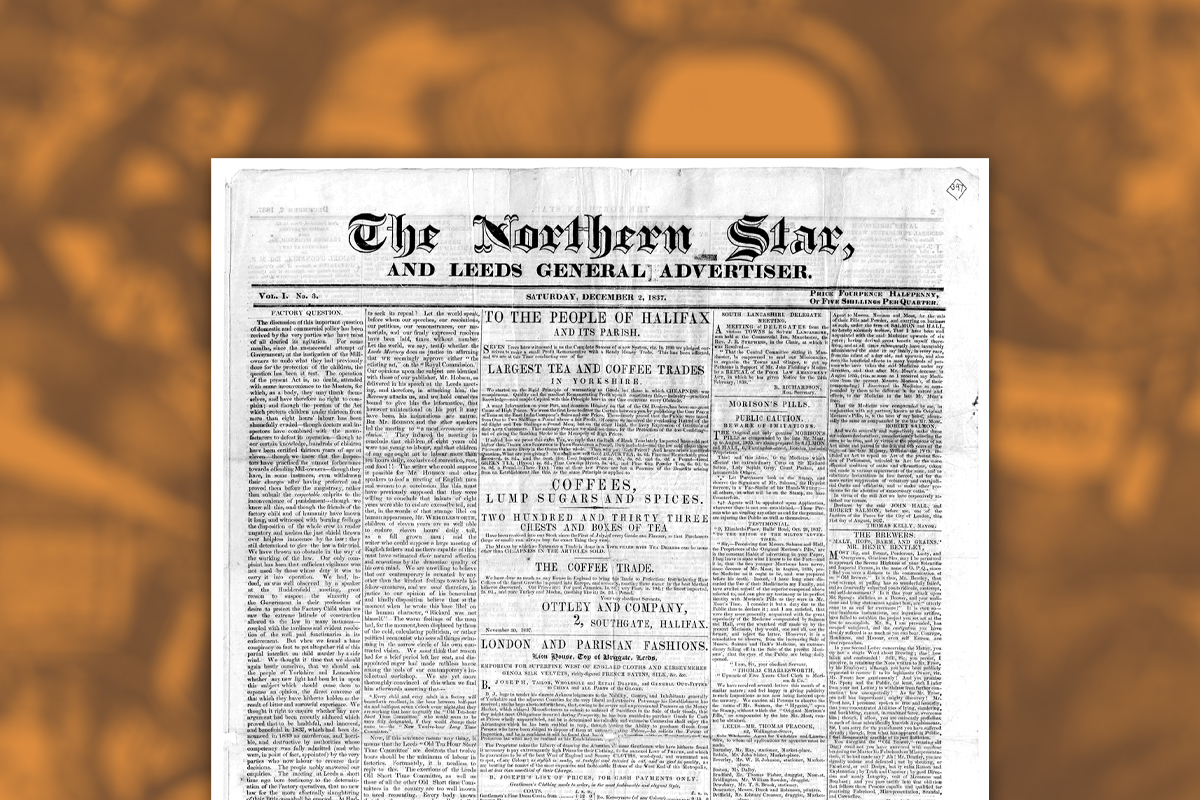A name etched into the collective consciousness of the labour and trade union movement is that of the ‘Tolpuddle Martyrs’. So who were they, what did they do and what lessons do they have for socialists in the twenty-first century?
Trade unions were by no means the creation of the nineteenth century. Primitive unions emerged in the eighteenth century, but their roots are in the old medieval craft gilds which were associations of both masters and men. In the eighteenth century, journeymen (From the French `journee’ meaning ‘day’ and referring to the fact that their labour was originally hired for the day.) started to combine with each other for protection against their employers. Such combinations were viewed with grave suspicion by the employers and the government and were banned by law in certain trades such as making hats, paper making and shoemaking.
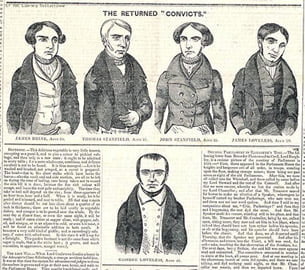
|
| The Tolpuddle Martys (left to right): James Brine, |
| Thomas Stanfield, John Stanfield, |
| James Loveless, George Loveless |
Developing industrialisation was causing tensions and conflict, and workers learned by hard experience that they needed to combine for their mutual protection against the employers, the courts and the governments of the time. In spite of this hostile political culture, combinations did manage to exist largely because skilled workers could not easily be replaced. On isolated occasions, such combinations or embryonic unions won disputes, the threat of strike action being enough to win grudging concessions, especially when the boss had full order books. Combinations were allowed an uneasy existence so long as their activities stayed localised and isolated.
The existence of friendly societies was given legal recognition in 1793. These organisations provided insurance for their members against injury, unemployment and death. This aspect of their work was tolerated. Of more questionable legality was their accumulation of funds which could be used to provide strike pay.
With the concerns about political stability in Britain created by the French Revolution, government policy hardened against combinations. Official thinking, although with very little evidence, was that they could easily become revolutionary conspiracies. In 1799 and 1800 the Combination Acts were passed, and these theoretically were applied to combinations both of workers and employers. A number of prosecutions went ahead against workers’ combinations although none against employers’ combinations ever reached the courts. In practice few prosecutions occurred and the penalties were light. One that did occurred in 1810 when printers working for ‘The Times’ newspaper received a maximum of 2 years’ imprisonment for conspiracy. The judge summed up the attitude of his class when he berated them for wickedly conspiring to injure the employers who gave them bread (!).
Combination Acts
In the briefly favourable economic conditions of the mid-1820s, the time seemed right to reexamine the issue of combinations. The 1824 and 1825 Combination Acts were seen as a great step forward by active workers because they established, or so it was thought at the time, the legality of combinations.
The result was that skilled workers increasingly organised themselves in combinations, or what were increasingly being called trade unions. Certain radical working men began to grope towards the idea of district or even of national unions.
One outcome of this was the setting up of the Grand National Consolidated Trades Union in London in 1834. It was designed to include as many trades as possible including those associated with women workers such as bonnet-makers and there were branches of the GNCTU consisting of women workers. Initially the major aim of the GNCTU was to establish a strike fund to assist its members but it quickly moved on to the idea of a ‘great national holiday’ or national strike. It voiced its intention of ‘bringing about a different order of things in which the really useful and intelligent part of society only shall have the direction of its affairs’. Unfortunately this remains unfulfilled even in 2008.
The GNCTU is known for its association with the Tolpuddle Martyrs. What happened was this. In 1834 a group of agricultural workers from Tolpuddle in Dorset decided to form a branch of the GNCTU. Their leaders were the brothers James and George Lovelace, sometimes rendered ‘Loveless’. They were nonconformist Christians of impeccable respectability who ardently believed that urgent action was needed to improve the wages and conditions of agricultural workers and saw membership of the GNCTU as a step in that direction.
Grand National Consolidated
It was the tradition in GNCTU branches to initiate members in a ritual which involved them ceremonially uttering oaths and solemn declarations, apparently to ensure that they realised the serious commitment they were undertaking. It did, however, render such organisations liable to be seen as criminal conspiracies.
There was plenty for the labourers to protest about at this time. With their families, many were being pushed down into poverty and despair. William Cobbett in his Rural Rides summed up what he observed at first hand: "Their dwellings are little better than pig-beds, and their looks indicate that their food is not nearly equal to that of a pig…in my life I never saw human wretchedness equal to this…"
These men had no intention of promoting violence and it was unfortunate for them that the ruling class were feeling extremely jittery at the time – after all this was only just after a decade or more of unrest and class conflict in many parts of rural Britain. Choosing their time and place with some care, the ruling class decided to make an example of these men from the outback of Dorset. They could not be prosecuted merely for forming a union but under legislation of 1797 they were charged with administering illegal oaths. This legislation had been passed in the aftermath of the naval mutinies. (See
The Naval Mutinies at Spithead and the Nore).
They first appeared in court at Dorchester before magistrates who were their sworn enemies -landowners and farmers. These magistrates had been in touch with London and it was decided to despatch a High Court Judge to try the men. The jury was handpicked and one man who was found to be a Methodist was hastily discharged from duty. Witnesses for the prosecution were allowed to give statements under oath but the labourers were not allowed to speak up in their own defence. The judge instructed the jury to find them guilty of administering illegal oaths and with breathtaking hypocrisy he then attacked unions in general for the ‘disgraceful practice’ of extracting subscriptions from the scanty pay of decent working men. He added a rider that the main purpose of such unions was to destroy property. The defendants must be made an example of.
Six of the labourers were sentenced to seven years transportation to a penal colony in Australia. It had especially irked the magistrates that the defendants had repeatedly refused to turn King’s evidence in return for immunity from the law. The attack on the GNCTU and the nascent union movement continued with some employers requiring their workers to sign a document agreeing that they would not join a union and rendering them liable to dismissal if they refused. No one ever prosecuted freemasons for administering oaths that were equally illegal.
There was an enormous outcry about this treatment of the `Tolpuddle Six’. To many it was clear that they were stooges who had borne the full brunt of the law not for administering illegal oaths but for the legal act of organising a trade union, and that this was the naked use of state power to deter others from following their example . Petitions poured into the government and huge demonstrations took place, particularly in London with 100,000s marching to protest – remarkable given the difficulty of travel at that time.
The government was clearly surprised by the volume of protest and two years later it was deemed prudent to bring the men back from Australia with a royal pardon. This was a calculated move to behead a source of grievance that might otherwise become uncontrollable. In 1838 the men were guests at a banquet in London and huge numbers turned out to cheer them as they paraded through the streets to the strains of a band playing ‘See the Conquering Hero comes.’
Transportation
The move towards trade unions for the better-off, more skilled workers continued but the GNCTU faded away and 10,000s of radicalised men turned towards the more overtly political action out of which the Chartist movement developed. Working people realised that the governments brought into office after the Reform Act of 1832 were every bit as much their enemy as previous unreformed governments and that more radical action was needed to obtain greater social justice.
So what lessons can be taken from these events?
Workers learn by experience through struggle. Political consciousness develops from concrete events and objective experiences. It is easy with hindsight to criticise the weakness of the GNCTU but its creation was an important landmark in the history of working class struggle. The prosecution of the Tolpuddle Martyrs led many advanced workers to see the limitations of trade union activity unless it was part of a wider political struggle. What Marx, Lenin and Trotsky were to demonstrate was that the subjective factor was also needed. This was, and remains, a socialist party involved in all the struggles of working people, winning the respect of those working people and able to develop their political awareness through these struggles. The task is to generalise from particular disputes and issues, to try to win these struggles but also to understand the limitations of such activity. It is necessary patiently to explain that only the socialist transformation of society could start to put an end to the fearful uncertainties and insecurities experienced by the bulk of the people within capitalist society.
GNCTU
In conclusion, another lesson was that the country’s rulers fear nothing more than the power of an aroused and united working class. Employers, law courts and Parliament were as one in deploring and fearing not the GNCTU itself, but its potential. The case of the Tolpuddle Martyrs clearly demonstrated that the State is not a neutral instrument but the means by which the ruling class will use peaceful means by preference and violence if necessary in order to maintain its power.

